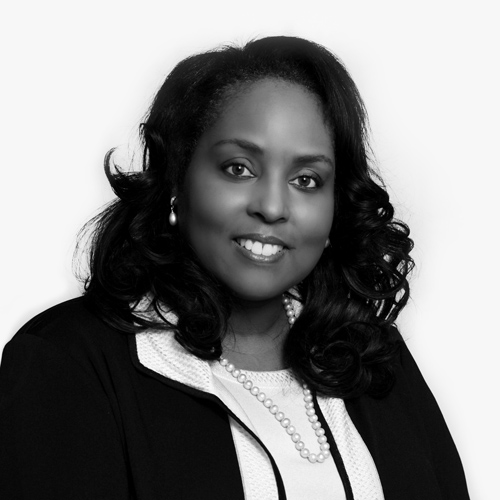Intellectual property (IP) has always been a complex area of law. It’s also received a tremendous amount of attention in recent years as manufacturers of technology products—some of which can contain dozens of different patented components—have done battle with patent owners and each other, not to mention with nonpracticing entities known as “patent trolls.”
The legal landscape is especially complicated for companies such as Johnson Matthey, which is involved in fine and specialty chemicals, as well as active pharmaceutical ingredients. Where some tech sectors specialize in volume and intellectual property (IP) turnover, Johnson Matthey often focuses on asset life cycle management, according to Ross Oehler, the company’s assistant general counsel. This means that the patents tend to cover longer time periods.
“Many technology patents lose their relevance very quickly,” Oehler says. “But a pharmaceutical-related asset can still be generating millions of dollars annually even toward the end of a twenty-year patent term.”
Complicating the full exploitation and protection of such assets is the overlay of the patent legal framework, which involves laws and regulations imposed by the US Food and Drug Administration (FDA). This includes the Drug Price Competition and Patent Term Restoration Act, better known as the Hatch-Waxman Act. It laid the groundwork for generic manufacturers to produce bioequivalent formulations, but also enabled pharmaceutical brand companies to more easily initiate patent infringement litigation.
“Hatch-Waxman also addresses issues like patent-term extension, often adding up to five years onto the term of a patent to compensate for time lost to preclinical and clinical work and FDA review, as well as exclusivity periods offered to brand [and] generic companies,” Oehler says. “It creates an intricate path [that] we have to navigate between the FDA and the US Patent and Trademark Office regulations.”
He also notes that quasi-litigation among competitors has increased, partly due to more difficult economic times that have led to more aggressive and creative tactics. Additionally, there are new procedures brought on by changes in the patent law. For example, the 2011 America Invents Act (AIA) makes it so inter partes reviews (IPRs)—faster and less expensive remedies than infringement lawsuits—can be brought before the Patent Trial and Appeal Board at the Patent and Trademark Office and resolved within eighteen months.
Having more efficient tools is advantageous, but IPRs present a challenge to IP lawyers. Since their inception, IPR filings have increased exponentially. That growth has been compared to the patent troll phenomenon since competitors and nonpracticing entities alike are taking on patents for a variety of strategic reasons.
“When IPRs first appeared in the pharmaceutical space, there was a lot of backlash contending that you couldn’t pursue Hatch-Waxman court challenges and IPRs simultaneously,” Oehler says. “Now they coexist and are common brand-generic challenges, all of which have to be taken into account as part of effective IP strategies.”
Such adaptability tactics are what make Oehler so effective, especially given the variety of Johnson Matthey’s products. He may be working with the emissions control or battery technology divisions one week or processing technology or pharmaceuticals the next.
That’s why it’s crucial for him to prioritize constant communication with all of the company’s business units. He embeds himself with every client to stay current with each of their objectives and challenges.
“We’re always working to find the most strategic way to implement legal or economic change, or address current issues with the company’s business models,” he says. “You can’t do that by yourself. You have to have constant dialogue with the businesses themselves to fully understand their strategic interests and how the existing and future IP portfolio can be put to best use.”
Oehler compares this to checking a fence line. Every post may have been secure at the last check, but they require constant monitoring to make sure a hole hasn’t been dug underneath or a section hasn’t fallen down because of new legislation, regulations, or competitors’ strategies and actions.
This requires acting offensively and defensively at the same time. In certain cases, Oehler might first determine whether filing an IPR is the most appropriate legal and business step to take. Still, he and his team also have to prepare for the possibility that a competitor may be considering the same tactic against them. Further attention may also be given to details such as determining the phase of an asset’s life cycle, whether it’s being used by an outside entity, or if litigation or licensing can enhance its value through strategic enforcement.
“I encourage a 360-degree view,” Oehler says. “The lifetime of patents and the lengthy process to obtain them require us to look ahead fifteen to twenty years and challenge ourselves and business clients to think about the future environment. We also have to ask questions about the ways in which a new law or business plan impacts existing IP assets, [then] develop proactive positions accordingly.”
Oehler has also been involved in helping to manage Johnson Matthey’s use of outside counsel. Much of that approach has revolved around developing relationships that maximize value for both parties. For instance, customized billing arrangements for larger cases can provide incentives for the outside firms, such as “success fees” for positive outcomes and phased fixed fees that offer tactical and financial benefits to the company.
When asked to identify what he believes the most promising and the most troubling IP developments will be in the near future, Oehler indicates that he sees them as being one and the same.
“The lifetime of patents and the lengthy process to obtain them require us to look ahead fifteen to twenty years and challenge ourselves and business clients to think about the future environment.
“The AIA has created new tools that provide increased strategic options for my business clients,” he says. “But I also know that my competitors have access to the same tools.”
In other words, the 360-degree view has never been more important.

